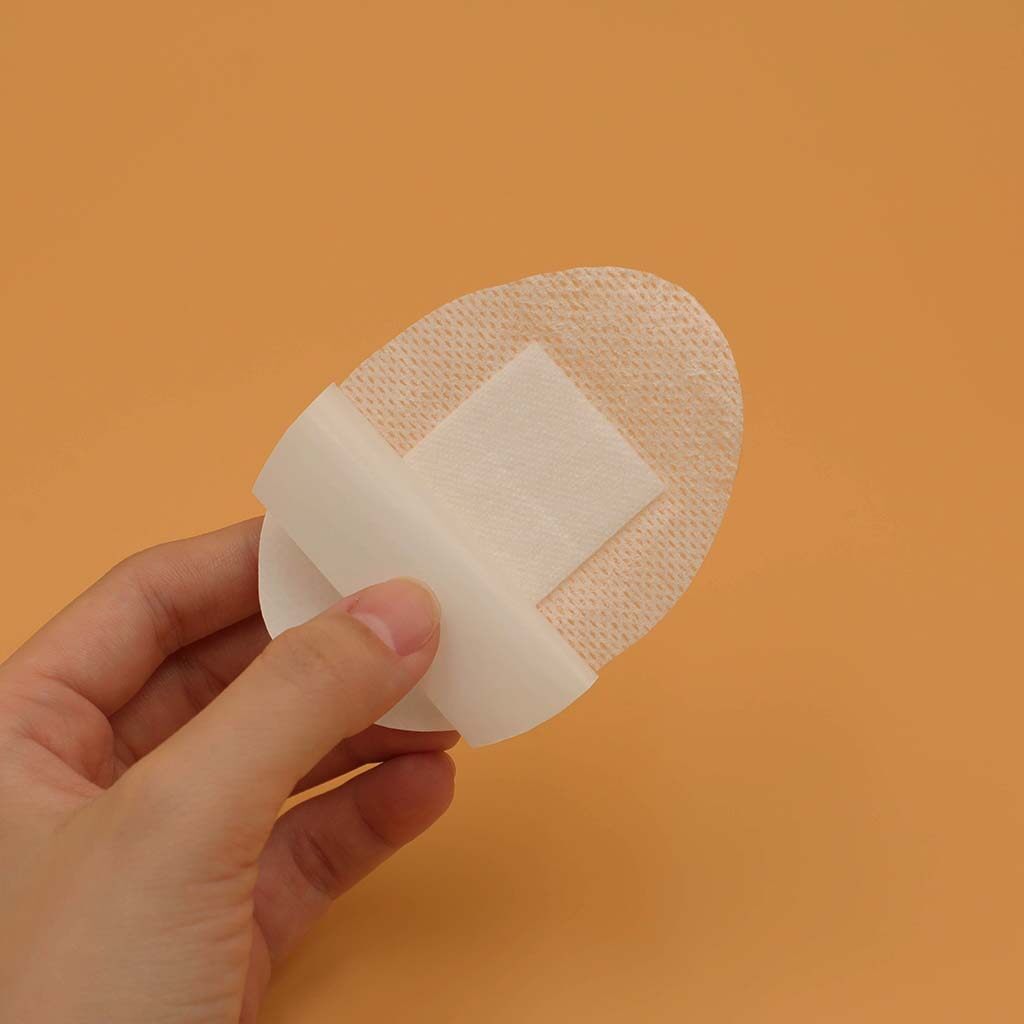Email cannot be empty
Password cannot be empty
Email format error
Email cannot be empty
Email already exists
6-20 characters(letters plus numbers only)
The password is inconsistent
Email format error
Email cannot be empty
Email does not exist
6-20 characters(letters plus numbers only)
The password is inconsistent


The Essential Guide to Wound Dressing Patches: Healing Made Easy
When it comes to taking care of wounds, whether minor cuts, scrapes, or post-surgery care, the right materials can make all the difference. One of the most useful innovations in wound care is the wound dressing patch. These patches are not only practical but also enhance the healing process, offering a combination of protection, moisture, and comfort. In this blog post, we'll explore the various aspects of wound dressing patches, from their benefits and types to their application and care.
Understanding Wound Dressing Patches
Wound dressing patches are specialized materials applied over wounds to promote healing while protecting them from infection and further injury. They come in various shapes, sizes, and materials, making them versatile enough to cater to different types of wounds. The primary purpose of these patches is to create an optimal environment for healing, which includes maintaining moisture levels, reducing pain, and preventing contamination.
Why Use Wound Dressing Patches?
Protection from Infection: One of the main reasons to use wound dressing patches is to protect the wound from bacteria and other pathogens that can lead to infection. Open wounds are susceptible to germs, and using a patch provides a barrier against these invaders.
Moisture Control: A moist wound environment is essential for optimal healing. Wound dressing patches help retain moisture while allowing excess fluid to escape. This balance aids in tissue regeneration and reduces the risk of scarring.
Pain Reduction: Many modern wound dressing patches come with special features designed to minimize pain. By cushioning the wound and preventing exposure to air and friction, these patches can significantly reduce discomfort during the healing process.
Convenience: Wound dressing patches are easy to apply and remove, making them an excellent choice for individuals who need to change their dressings frequently. They can be applied at home and are often available over the counter, eliminating the need for a doctor's visit for minor injuries.
Variety of Options: There are many different types of wound dressing patches available, catering to various needs. Whether you have a small cut, a surgical wound, or a burn, there's likely a patch designed specifically for your situation.
Types of Wound Dressing Patches
Wound dressing patches are not a one-size-fits-all solution. They come in various types, each tailored for specific needs. Here’s a closer look at some of the most common types:
1. Adhesive Bandages
These are perhaps the most familiar type of wound dressing patches. Adhesive bandages are ideal for minor cuts and scrapes. They typically consist of a small piece of gauze attached to an adhesive strip, allowing for easy application. They provide a basic level of protection and are readily available at any pharmacy or grocery store.
2. Hydrocolloid Dressings
Hydrocolloid dressings are highly effective for wounds that need moisture retention. They contain a gel-forming agent that helps create a moist environment, promoting faster healing. These patches are often used for blisters and ulcers but can also be beneficial for other wounds. They adhere well to the skin and can be left in place for several days, reducing the need for frequent changes.
3. Foam Dressings
Foam dressings are thicker and provide excellent cushioning for more significant wounds. They are absorbent and help manage exudate (fluid that seeps from the wound) while protecting the surrounding skin. These dressings are particularly useful for post-operative wounds or pressure sores, where added protection is necessary.
4. Alginate Dressings
Made from seaweed, alginate dressings are highly absorbent and ideal for wounds with moderate to heavy exudate. They form a gel-like substance when in contact with wound fluid, providing a moist healing environment. Alginate dressings are often used for deep or cavity wounds, making them a go-to choice in clinical settings.
5. Transparent Film Dressings
Transparent film dressings are thin and flexible, allowing for easy monitoring of the wound without removing the dressing. They are waterproof and provide a barrier against bacteria while allowing moisture to escape. These dressings are often used for superficial wounds and as a secondary dressing over other types of wound care products.
6. Hydrogel Dressings
Hydrogel dressings are designed to hydrate dry wounds. They contain a high percentage of water, making them ideal for wounds that require moisture to facilitate healing. Hydrogel dressings can help with pain relief and are beneficial for burns and other painful wounds.

How to Apply Wound Dressing Patches
Applying a wound dressing patch correctly is crucial for effective healing. Here’s a step-by-step guide to ensure proper application:
Step 1: Gather Your Supplies
Before you start, gather all the necessary supplies: the wound dressing patch, sterile gloves (if available), antiseptic solution, and a pair of scissors (if needed to trim the patch).
Step 2: Clean the Wound
Wash your hands thoroughly with soap and water. If you have sterile gloves, put them on. Gently clean the wound with an antiseptic solution or mild soap and water to remove any debris or bacteria.
Step 3: Dry the Area
Pat the area around the wound dry with a clean, sterile cloth. Avoid rubbing the wound itself, as this can cause further irritation or injury.
Step 4: Apply the Dressing
Carefully peel the backing off the wound dressing patch. Position the patch over the wound, ensuring it covers the entire area. Press down gently but firmly to ensure it adheres to the skin.
Step 5: Secure the Edges
If the patch doesn’t have adhesive edges, you may need to secure it with medical tape. Ensure that the tape does not cover the wound itself, as this can trap moisture and lead to infection.
Step 6: Monitor the Wound
Keep an eye on the wound for any signs of infection, such as increased redness, swelling, or discharge. Change the dressing as needed, typically every one to three days, or sooner if it becomes wet or soiled.
Caring for Wound Dressing Patches
Proper care of wound dressing patches is essential for promoting healing and preventing complications. Here are some tips to ensure optimal care:
1. Change Dressings Regularly
Follow the recommended schedule for changing dressings, which may vary depending on the type of patch and the nature of the wound. If the dressing becomes wet or dirty, replace it immediately to minimize infection risk.
2. Keep the Area Clean
When changing the dressing, always clean the wound area again. This helps remove any bacteria that may have come in contact with the patch.
3. Watch for Signs of Infection
Monitor the wound for any changes that could indicate infection, such as increased redness, swelling, warmth, or unusual discharge. If you notice any of these signs, contact a healthcare professional promptly.
4. Avoid Picking at the Dressing
Resist the urge to pick at the dressing or the wound itself, as this can introduce bacteria and delay healing. If the dressing begins to peel off or lift at the edges, replace it with a new patch.
5. Consult a Healthcare Professional
If the wound does not improve after several days or shows signs of infection, consult a healthcare professional for further evaluation and treatment options.
Fun Facts About Wound Dressing Patches
To wrap up our discussion on wound dressing patches, here are some interesting facts that might surprise you:
Historical Usage: The use of wound dressings dates back thousands of years. Ancient Egyptians used linen cloths soaked in oils and herbs to treat wounds, showcasing the long history of caring for injuries.
Technological Advances: Modern wound dressing patches have come a long way, incorporating advanced materials and technologies, including silver-infused dressings that help combat infection.
Specialized Designs: Some wound dressings are designed specifically for pediatric patients, featuring fun colors and characters to make the healing process less intimidating for children.
Natural Alternatives: In recent years, there has been a trend toward natural and organic wound dressings, utilizing materials like honey and aloe vera for their healing properties.
Scientific Research: Ongoing research continues to explore new materials and technologies for wound care, ensuring that patients have access to the best possible options for healing.Conclusion
Wound dressing patches play a crucial role in the healing process, offering protection, comfort, and moisture retention. With a variety of options available, you can find the perfect patch for your specific needs, whether it’s a small cut or a larger surgical wound. By understanding how to properly apply and care for these patches, you can promote healing and minimize the risk of complications.
As you venture into the world of wound care, remember that a little knowledge goes a long way. The next time you or someone you love has a wound, you’ll be better equipped to choose the right dressing and ensure a smooth healing journey. Happy healing!

